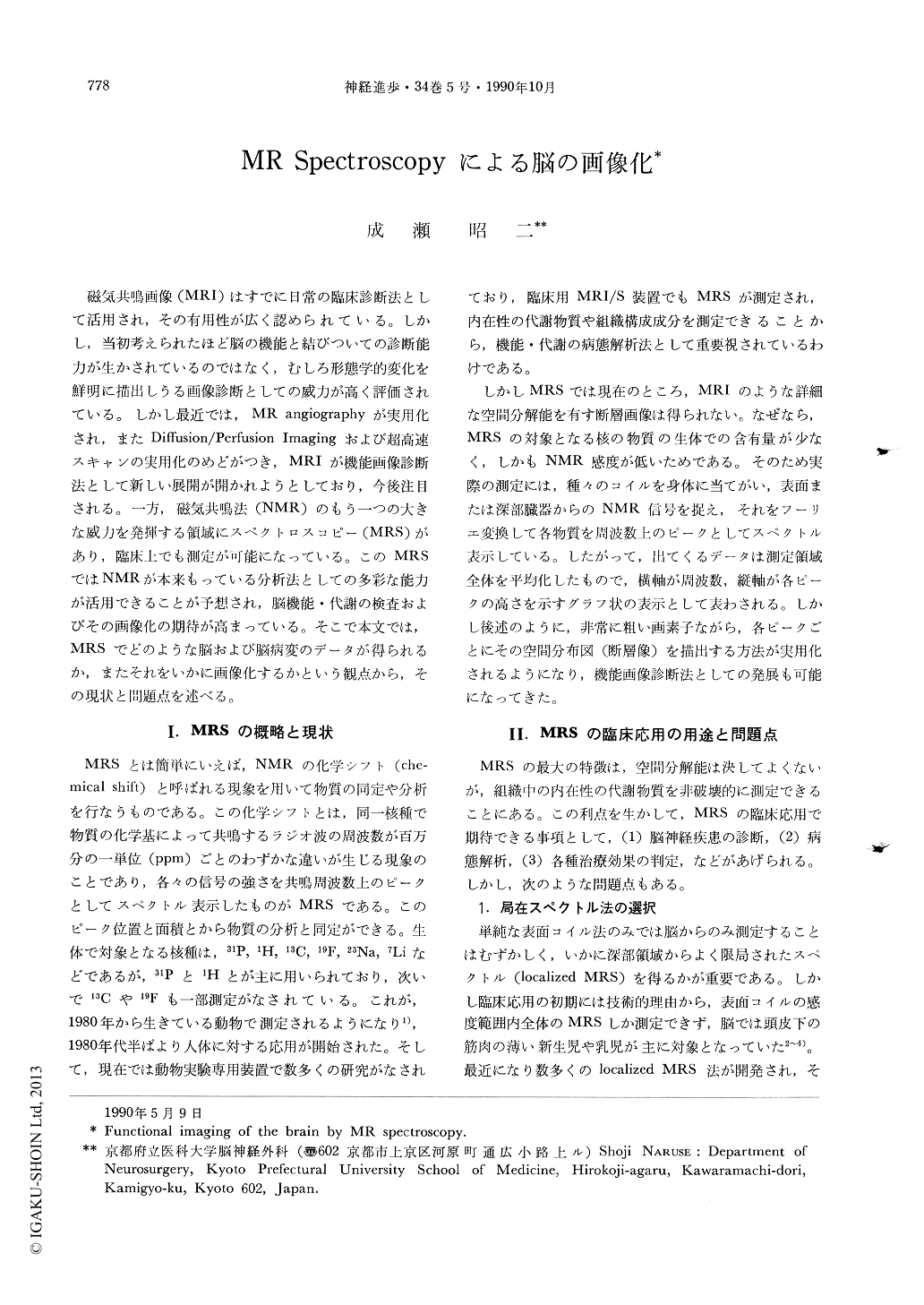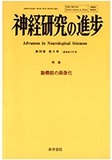Japanese
English
- 有料閲覧
- Abstract 文献概要
- 1ページ目 Look Inside
磁気共鳴画像(MRI)はすでに日常の臨床診断法として活用され,その有用性が広く認められている。しかし,当初考えられたほど脳の機能と結びついての診断能力が生かされているのではなく,むしろ形態学的変化を鮮明に描出しうる画像診断としての威力が高く評価されている。しかし最近では,MR angiographyが実用化され,またDiffusion/Perfusion Imagingおよび超高速スキャンの実用化のめどがつき,MRIが機能画像診断法として新しい展開が開かれようとしており,今後注目される。一方,磁気共鳴法(NMR)のもう一つの大きな威力を発揮する領域にスペクトロスコピー(MRS)があり,臨床上でも測定が可能になっている。このMRSではNMRが本来もっている分析法としての多彩な能力が活用できることが予想され,脳機能・代謝の検査およびその画像化の期待が高まっている。そこで本文では,MRSでどのような脳および脳病変のデータが得られるか,またそれをいかに画像化するかという観点から,その現状と問題点を述べる。
The magnetic resonance spectroscopy (MRS) has a high potentiality to measure the various metabolites in situ in the brain. Many nuclei are used in the medical field; for example, 1H, 31P, 13C, 23Na, 19F and Li. Each metabolite is mainly represented as a form of spectrum, depending on the chemical shift value which shows the specific resonance peak corresponding to each metabolite, and recently it becomes possible to be shown in a form of topographic imaging in which the matrix size is large. 31P-MRS and 1H-MRS are widely studied in many diseases both experimentally and clinically.

Copyright © 1990, Igaku-Shoin Ltd. All rights reserved.


